 |
 |
 |
| |
Value of A Cure To Society: "$256.9 Bill relative to No Treatment"
|
| |
| |
"Our aim was to assess the value of cure to society by treating HCV GT1.......Value of cure was defined as the increase in the QALYs multiplied by the value of a QALY (in the base case, $50,000) minus the increase in treatment costs (Equation 1)".....[from Jules: in Table 3 the cost per SVR with Harvoni for a non-cirrotic GT1a patient is $100,397 (12 weeks) which includes cost of drug, monitoring & adverse events in the short term & the long-term cost is $101,635, AND the cost of NO TReatment is $141,856.....approx $41,000 per patient saved....x 3 mil or 5 mil]......"At the population level, assuming a QALY value of $50,000, both 2nd generation triple therapy and all-oral regimens demonstrated positive cure values of $19.5 billion (bn) and $68.9 bn respectively (drug costs only) and $149.9 bn and $256.9 bn respectively (total lifetime costs) relative to no treatment (Figure 3)."
---------------------
The Value of Cure Associated with Treating Treatment-na´ve (TN) Chronic Hepatitis C (CH-C) Genotype 1 (GT1): Are the New All Oral Regimens a Good Value to Society?
Reported by Jules Levin
AASLD 2015 Nov 13-17 San Francisco
Zobair M Younossi1,2, Haesuk Park3, Douglas Dieterich4, Sammy Saab5, Aijaz Ahmed6, Stuart C. Gordon7
1Center for Liver Disease, Department of Medicine, Inova Fairfax Hospital, Falls Church, VA; 2Betty and Guy Beatty Center for Integrated Research, Inova Health System, Falls Church, VA
3University of Florida, Gainesville, FL; 4Mount Sinai Medical Center, New York City, NY; 5University of California Los Angeles, Los Angeles, CA; 6Stanford University, Stanford, CA; 7Henry Ford Hospital, Detroit, MI
SPONSORSHIP - THIS STUDY WAS SPONSORED BY:
Gilead Sciences
Program ABSTRACT:
Background and Aim: The approval of all-oral regimens has led to substantially high cure rates. Our aim was to assess the value of cure to society by treating HCV GT1.
Methods: A Markov model for HCV GT1 projected long-term health outcomes, life-years (LYs), and quality-adjusted life-years (QALYs) gained for a lifetime horizon. The model compared current therapies in the US [2nd generation triple (sofosbuvir+PR & simeprevir+PR) and all-oral therapy treatments (ledipasvir/sofosbuvir and ombitasvir+paritaprevir/ritonavir+dasabuvir▒ribavirin] with no treatment option. Sustained virologic response (SVR) rates were based on Phase III clinical trials. We assumed that 80% and 95% of HCV GT1 patients are eligible for 2nd generation triple and all-oral regimens. Transition probabilities, utility and mortality were based on literature review and consensus by hepatologists.
Results: In 2015, 1.11 million individuals were TN with HCV-GT1. The model estimated that treating all eligible HCV GT1 patients with 2nd generation triple and all-oral therapies can result in 1.8 million and 2.9 million additional QALYs gained. Using a threshold of $50,000 to $150,000 for the value of a QALY, these regimens led to savings of $91-$274 billion and $144-$432 billion. Also, the costs of these regimens were $80 billion and $93 billion. The value of cure was assessed by subtracting the costs of the regimens from the economic gains associated with the value of QALYs.
The value of cure with 2nd generation triple and all oral regimens was estimated at $12-$194 billion and $51-$340 billion.
Each HCV GT1 patient cured with 2nd generation triple and all oral regimens could save the U.S. between $10,381-$174,473 and $46,141-$305,021.
Conclusions: The recent evolution of regimens for HCV GT1 has increased efficacy and value of cure. Curing all eligible HCV-GT1 patients with all-oral regimen leads to substantial savings to the U.S. society.
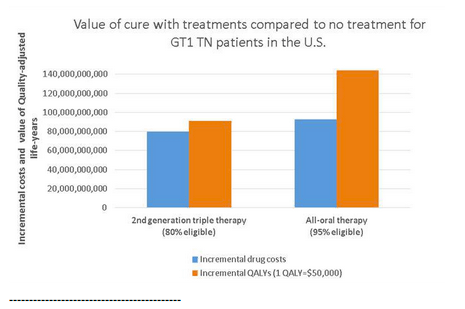
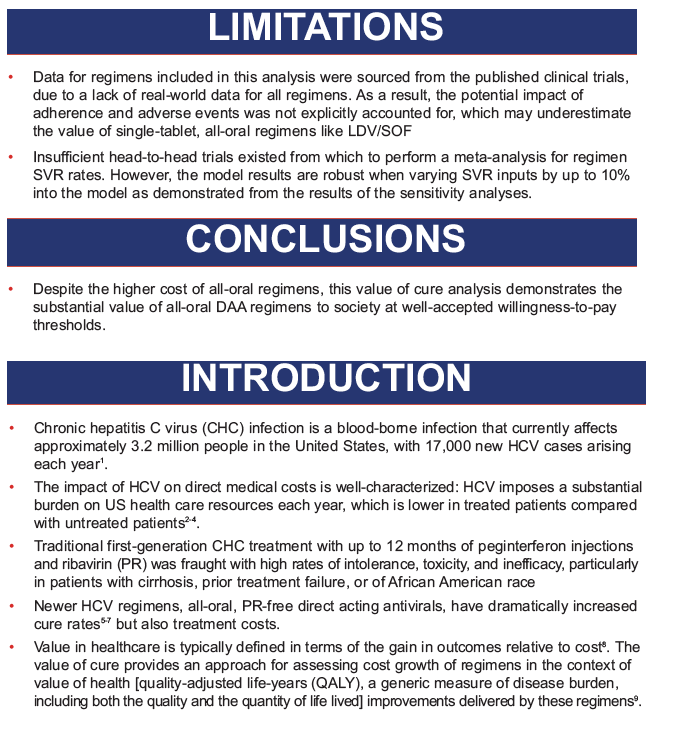
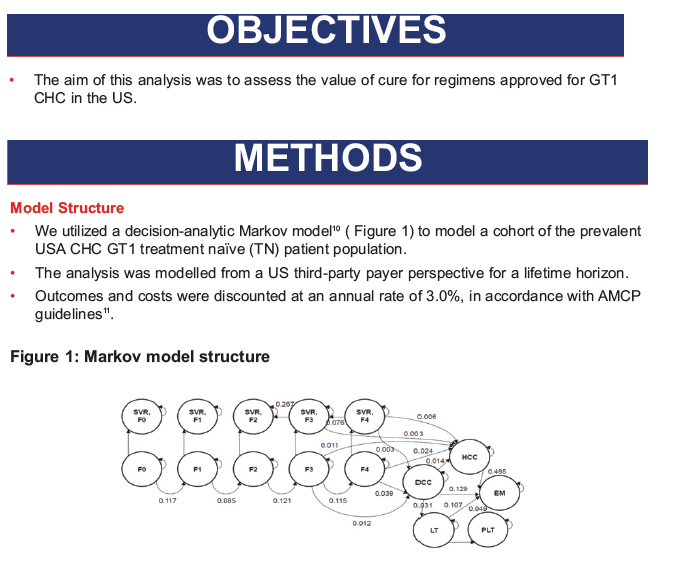

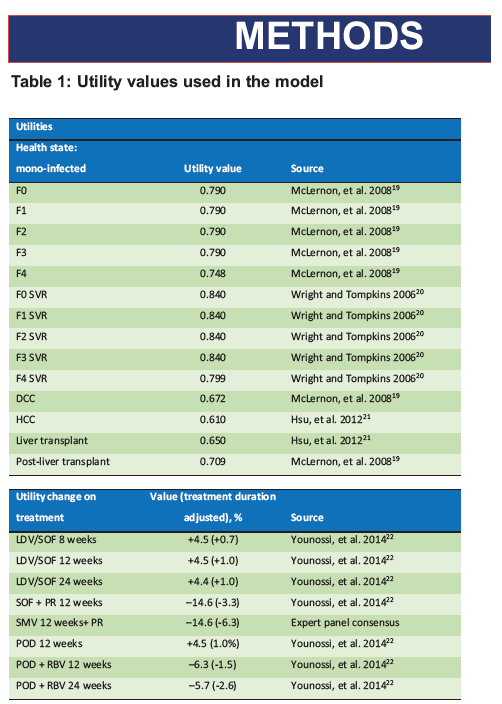
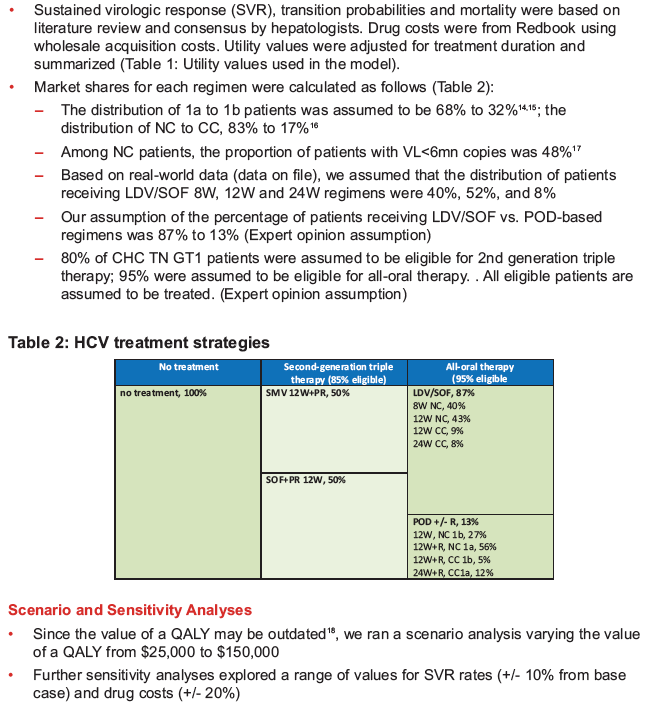

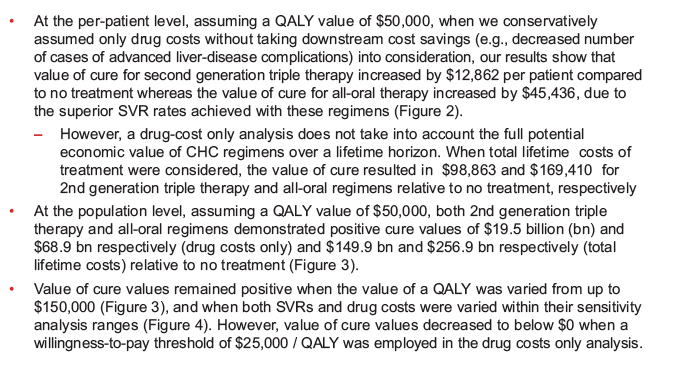
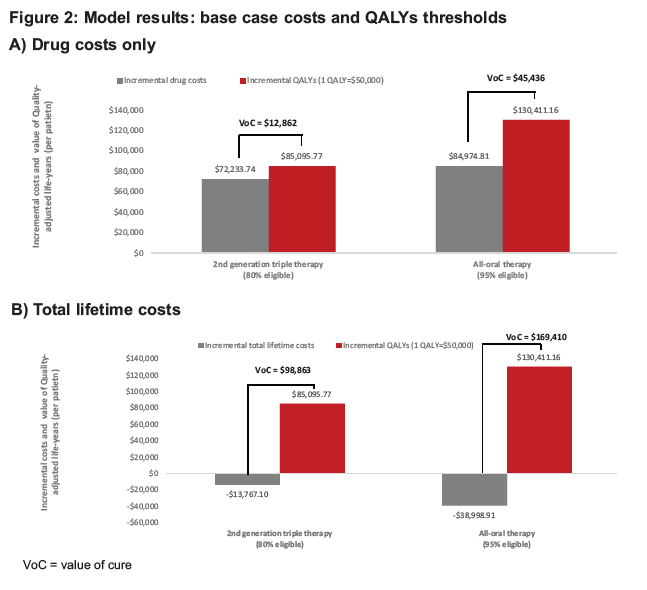
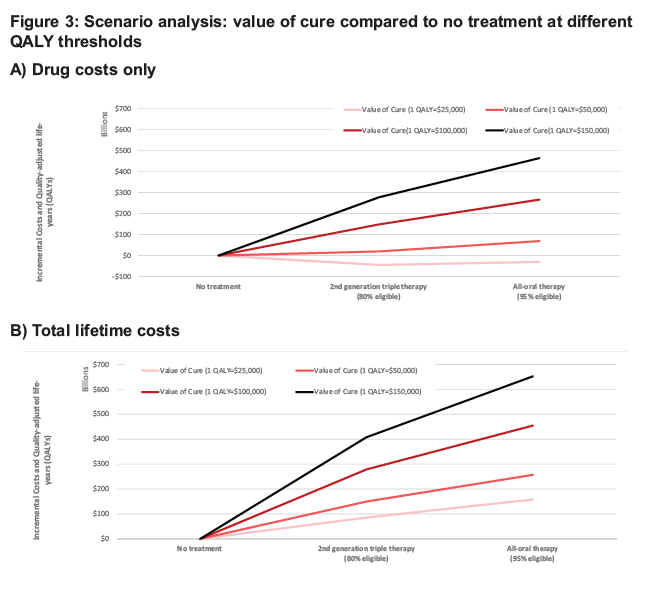
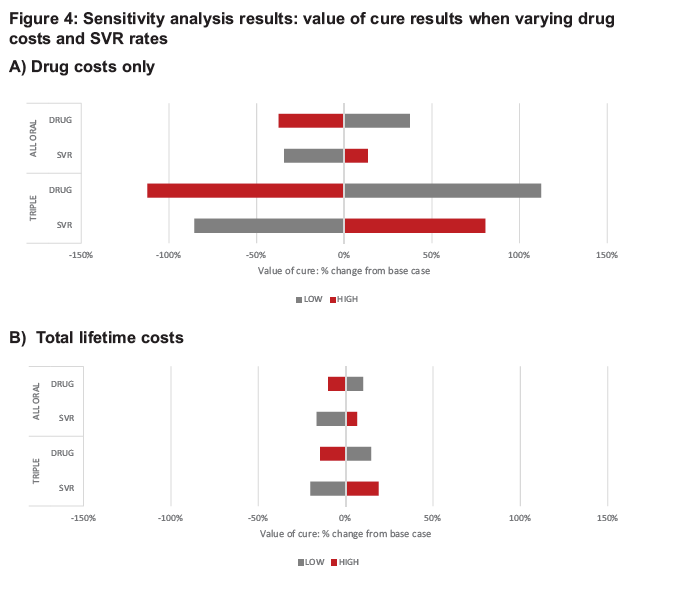
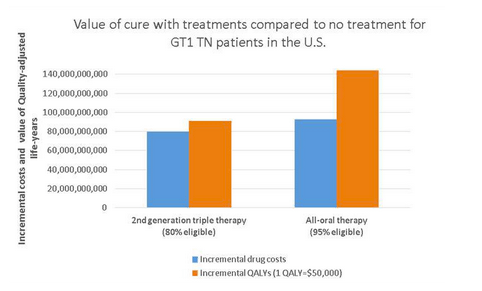
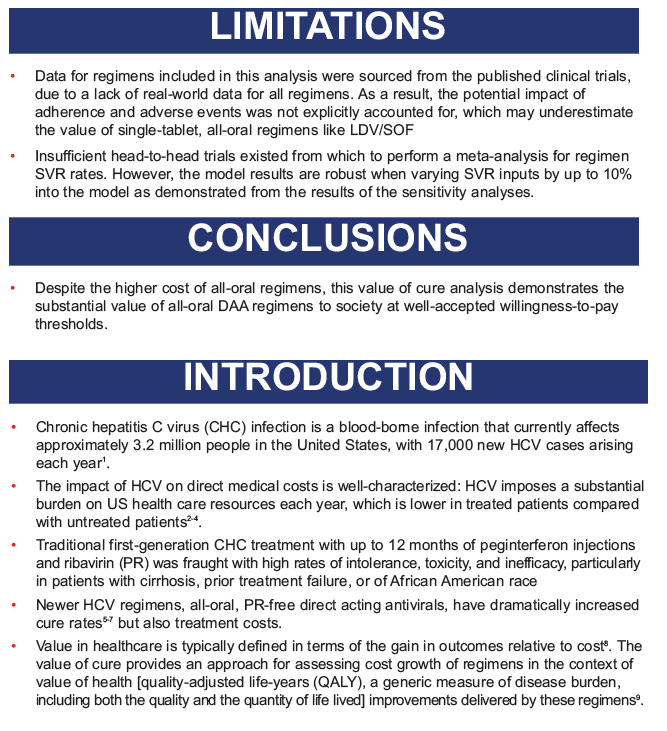
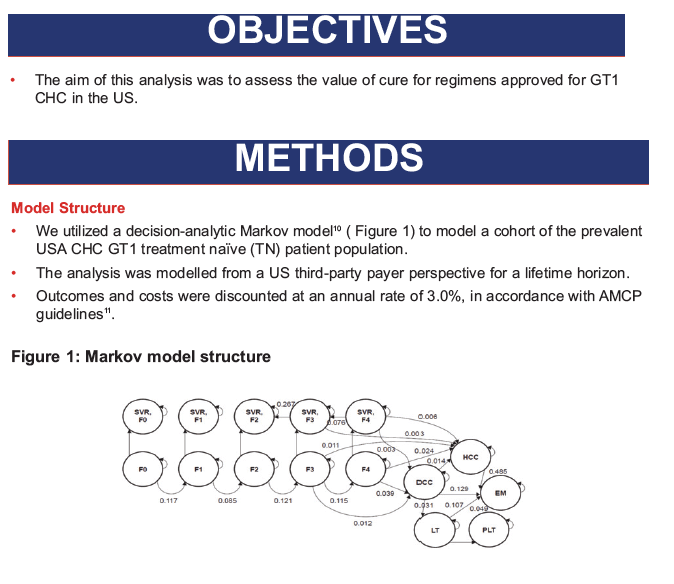


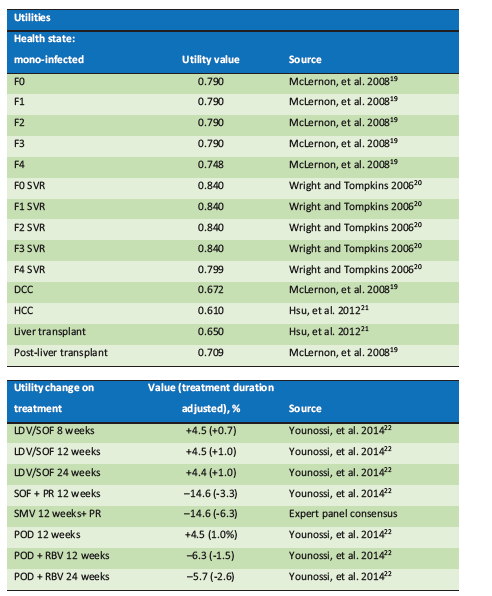
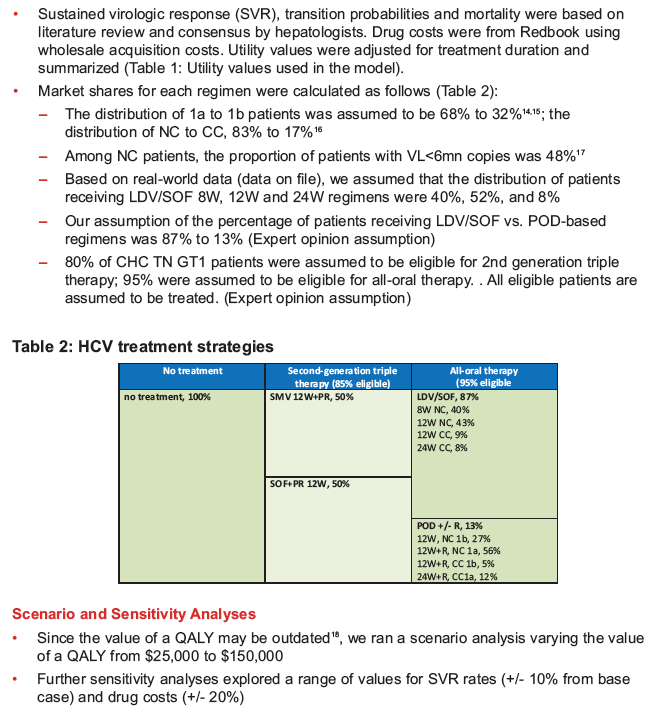
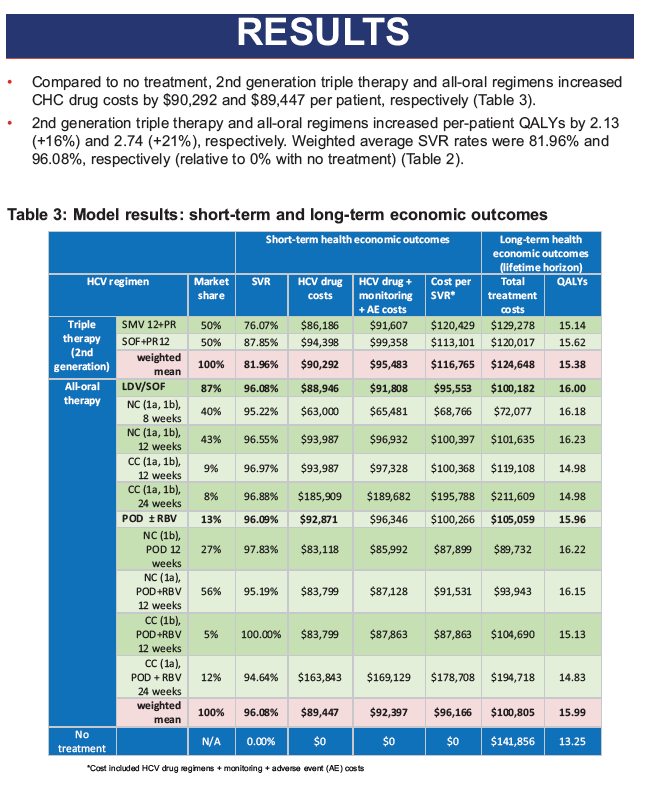
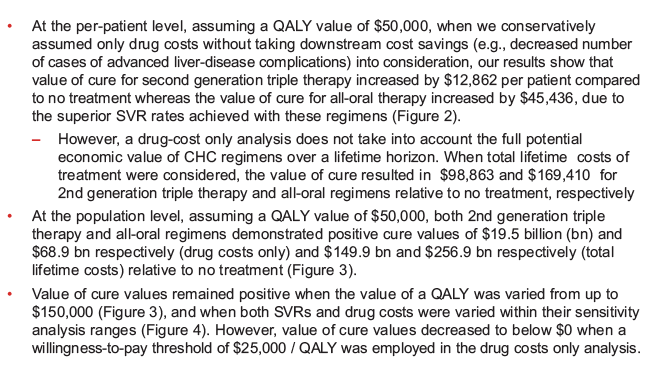
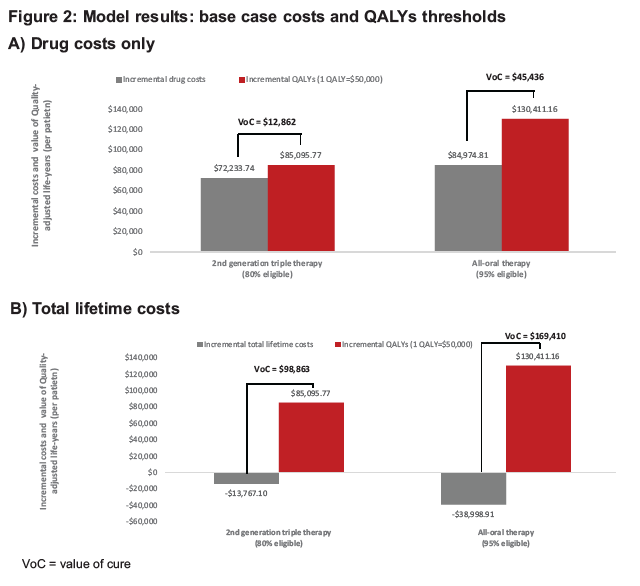
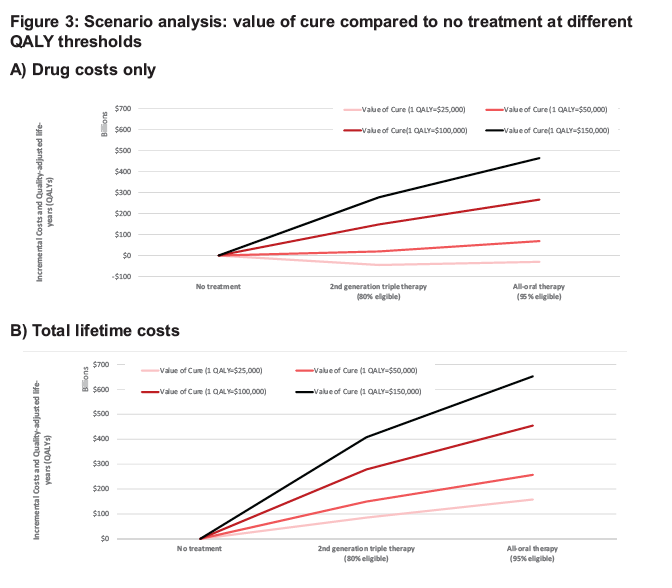

|
| |
|
 |
 |
|
|